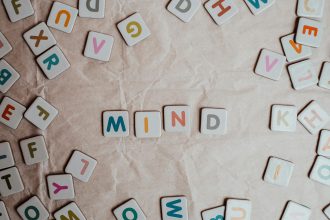The frontal lobes are often called the brain’s “control center.” They regulate decision-making, planning, problem-solving, movement, and personality. When a brain injury affects the frontal lobes, the impact can be profound. Survivors may find themselves struggling not only with physical or cognitive tasks but also with changes in behavior, self-control, and relationships.
Frontal lobe damage is one of the most common outcomes of traumatic brain injury because of the lobe’s position at the front of the skull, where it is especially vulnerable during falls, crashes, or impacts. The effects vary widely depending on the severity of injury, but they can transform how a person thinks, acts, and connects with others.
How the Frontal Lobes Work
The frontal lobes sit just behind the forehead, occupying the largest portion of the brain. They are responsible for higher-order functions—skills that separate human thought and behavior from basic survival instincts. These include:
- Executive functions such as planning, organizing, and prioritizing tasks.
- Impulse control and judgment, allowing people to weigh consequences before acting.
- Personality and social behavior, including empathy and emotional regulation.
- Movement control, through the motor cortex at the back of the frontal lobe.
- Speech production, in the left frontal lobe’s Broca’s area.
Damage to this region can therefore affect nearly every aspect of daily life.
Causes of Frontal Lobe Damage
Frontal lobe injuries are most often caused by:
- Traumatic brain injury (TBI): Falls, car accidents, and sports collisions often impact the forehead.
- Stroke: Reduced blood flow to the frontal lobe can damage brain tissue.
- Tumors or infections: Growths or inflammation in the frontal lobe may impair its function.
- Degenerative conditions: Diseases like dementia can gradually affect frontal lobe networks.
In brain injury survivors, TBIs are by far the most common cause.
Symptoms and Effects
Frontal lobe damage produces a wide range of symptoms, many of which may not be visible to others. Survivors may appear physically recovered but continue to struggle with changes in thinking and behavior. Common effects include:
- Cognitive changes: Difficulty planning, organizing, multitasking, or solving problems. Survivors may lose the ability to manage daily responsibilities or work tasks.
- Behavioral changes: Loss of inhibition, impulsive decisions, or inappropriate social behavior. Some survivors act without considering consequences, straining relationships.
- Personality shifts: A once-reserved person may become outgoing and disinhibited, or a social, active person may become withdrawn and apathetic.
- Emotional regulation problems: Mood swings, irritability, or difficulty managing anger.
- Language issues: Struggles with word-finding or producing fluent speech if Broca’s area is affected.
- Motor difficulties: Weakness or paralysis on one side of the body if the motor cortex is damaged.
Families often find these changes particularly difficult, as they may feel that the person they knew has fundamentally changed.
Diagnosis
Diagnosing frontal lobe damage involves both imaging and behavioral assessment. CT scans and MRIs can show structural damage, while neuropsychological testing measures executive function, attention, and behavior. Because many changes are subtle or “invisible,” neuropsychologists often play a central role in identifying deficits that affect daily life.
Treatment and Rehabilitation
There is no single cure for frontal lobe damage, but rehabilitation helps survivors rebuild skills and adapt to changes.
- Cognitive rehabilitation therapy focuses on planning, memory, and problem-solving.
- Speech and language therapy helps with communication when Broca’s area is involved.
- Neuropsychology and counseling support emotional regulation and behavior management.
- Medication may be used to stabilize mood, reduce impulsivity, or treat depression and anxiety.
- Occupational therapy teaches strategies for managing daily tasks despite cognitive challenges.
Family education is also essential. Understanding that behavior changes are a symptom of injury—not willful misbehavior—helps reduce frustration and improve relationships.
Living with Frontal Lobe Damage
Recovery from frontal lobe injury varies widely. Some survivors regain significant function with therapy, while others experience long-term changes in personality or behavior. Many continue to need support with judgment, planning, or emotional regulation.
Families often benefit from support groups and counseling, which provide both education and emotional relief. With patience, rehabilitation, and community support, survivors can adapt and build meaningful lives even when frontal lobe changes persist.
Conclusion
Frontal lobe damage is one of the most complex complications of brain injury. Its effects on thinking, personality, and behavior often reach deeper than physical symptoms, reshaping how survivors see themselves and interact with others. While recovery is not always complete, therapy, medication, and family support can greatly improve function and quality of life.
By addressing the cognitive and emotional sides of injury, survivors and families can move toward a new sense of stability, connection, and hope.




